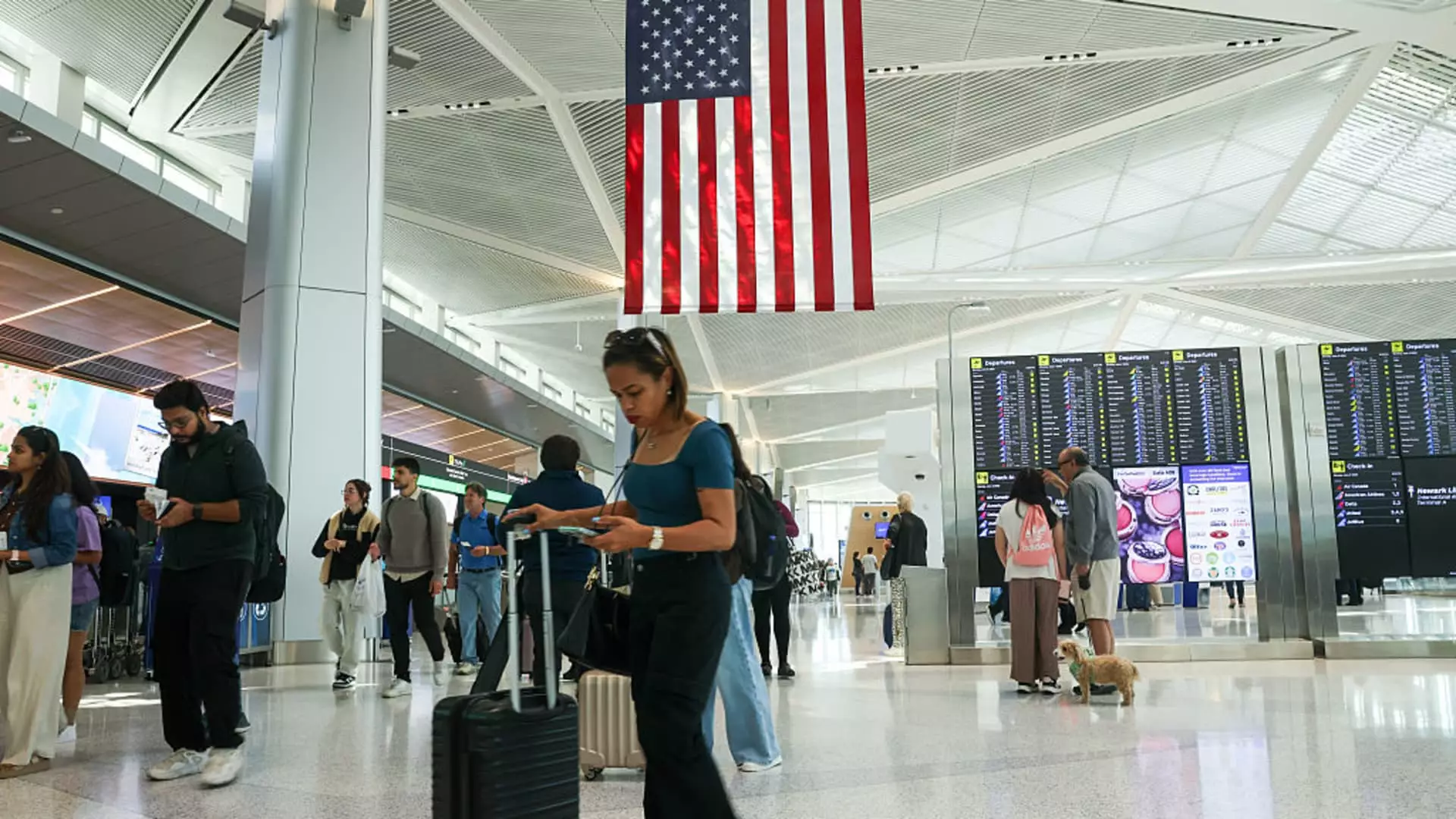As the summer heat intensifies, so too does the aviation industry’s precarious situation. The influx of holiday travelers paints a picture of a thriving industry, yet beneath this surface lies a troubling undercurrent of instability. Airlines outwardly project a sense of stability, but their internal strategies reveal a different story—one of cautious adjustments and hesitant optimism. Despite anticipated passenger surges during the July 4th period, the broader outlook for the rest of 2025 remains murky at best.
The accompanying narrative of falling airfare prices exemplifies this disconnect. While lower fares suggest an attempt to stimulate demand, they also reflect a market brimming with excess capacity and inadequate passenger volume. The average round-trip fare of $265, the lowest since 2021, epitomizes this paradox: people are flying more cheaply, yet not necessarily flying more often. This decline in cost, often heralded as a boon for travelers, is in reality a symptom of a sputtering industry desperately trying to fill planes and generate revenue amid waning demand.
The industry’s outlook remains uncertain—not only because of demand fluctuations but also due to external economic factors. Tariffs, geopolitical tensions, and waning international travel have all conspired to flatten growth prospects. Airlines like Delta, American, and Alaska have already retreated from their optimistic forecasts for 2025, a move that underscores their perceptible anxiety. Their reluctance to commit to firm projections reveals a cautious stance rooted in economic unpredictability.
Recent earnings seasons have done little to dispel these concerns. Airlines report stable but stagnant performance, hinting at a market that is neither thriving nor collapsing but merely holding steady in a state of limbo. The American economy itself shows an odd resilience—jobs data continues to surprise on the upside—yet this strength appears disconnected from airline demand. Consumers are employed, but they are not showing the willingness to spend on travel as they once did, reflected in decreasing airline revenue and declining air travel expenditures.
The airline industry’s future hinges on how well it manages its capacity and pricing strategies amid these turbulent times. Carriers are already planning to pare back unprofitable routes, especially during off-peak periods. Their aim is clear: preserve profit margins by reducing flights when demand falters. It’s a sober acknowledgment that even the busiest seasons do not guarantee adequate returns when consumer confidence is fragile.
This strategic retrenchment raises larger questions about the sector’s resilience. Marginal profits are increasingly hard to come by, and the industry’s dependence on lucrative summer quarters makes it vulnerable to downturns. Historically, the second and third quarters have been the industry’s cash cows; however, even that profitability is under siege as demand remains subdued.
Meanwhile, travelers continue to flock through major airports, but the long-term sustainability of this traffic surge remains doubtful. TSA data shows enduring high volumes, yet this doesn’t translate into healthy revenue streams. The decline in international travel fares and volume—especially to Europe and Asia—is a telltale sign of waning global mobility. These cheaper international fares might temporarily boost passenger numbers but fail to guarantee sustained profitability or growth.
Beneath the surface of rising travel numbers and falling ticket prices lies a critical question: is this just a temporary lull or an ominous sign of systemic decline? While current figures might seem promising at first glance, deeper analysis suggests that the core issue is a fragile consumer confidence and economic environment that could unravel at any moment.
Key sectors like travel are often bellwethers of broader economic health. The recent decline in air travel spending—over 11% in just June—raises a red flag: consumers are cutting back, possibly due to inflation, stagnating wages, or broader economic anxiety. Even with employment numbers remaining resilient, this spending slowdown hints at a crucial shift in consumer priorities. For many Americans, travel is no longer seen as an essential or even desirable expenditure, but rather an optional luxury that they are reluctant to indulge in.
The industry’s current trajectory indicates that despite short-term gains, substantial challenges loom on the horizon. The optimistic narrative of a robust summer season masks deeper vulnerabilities—vulnerabilities that many analysts and industry insiders refuse to acknowledge openly. Until there is a genuine increase in demand, the airline industry will persist in a state of cautious survival, constrained by economic realities rather than growth opportunities.

